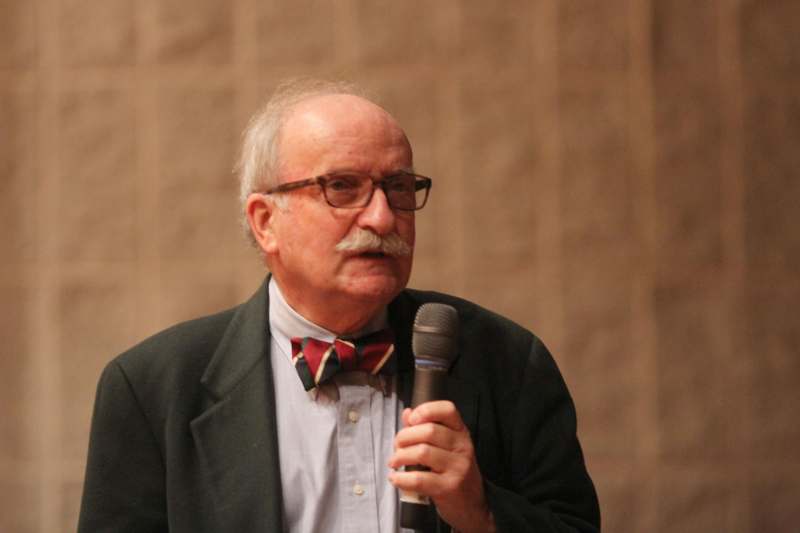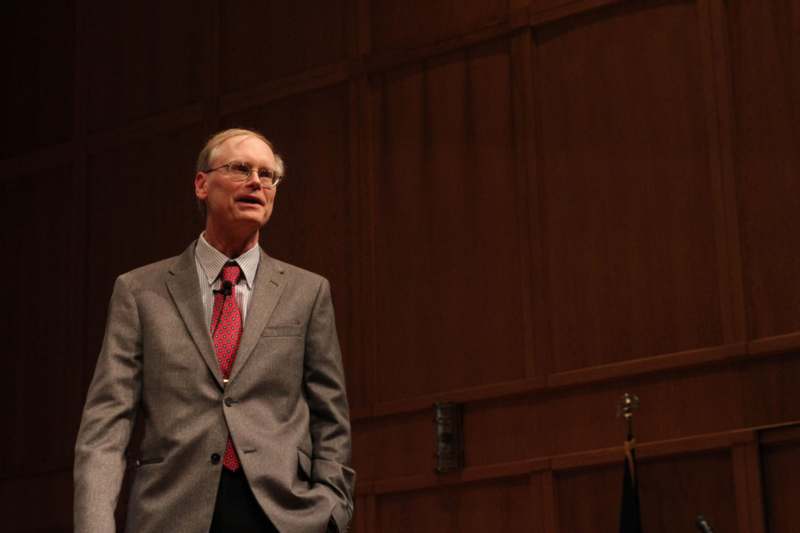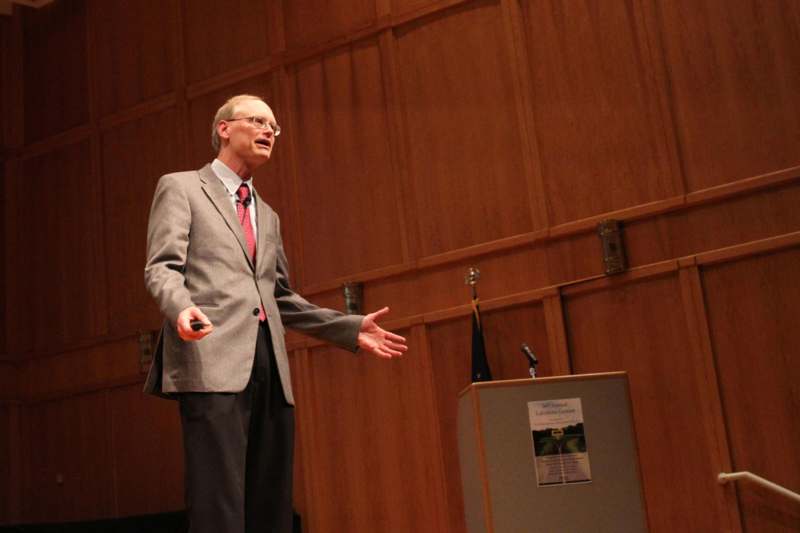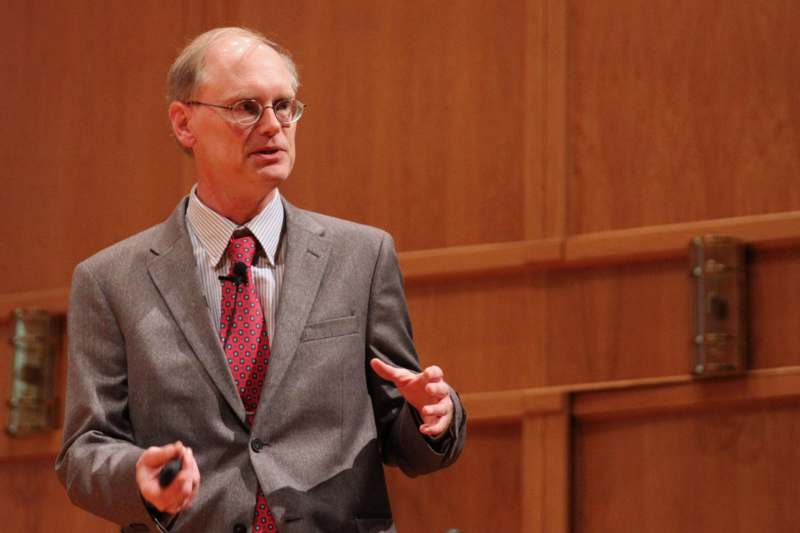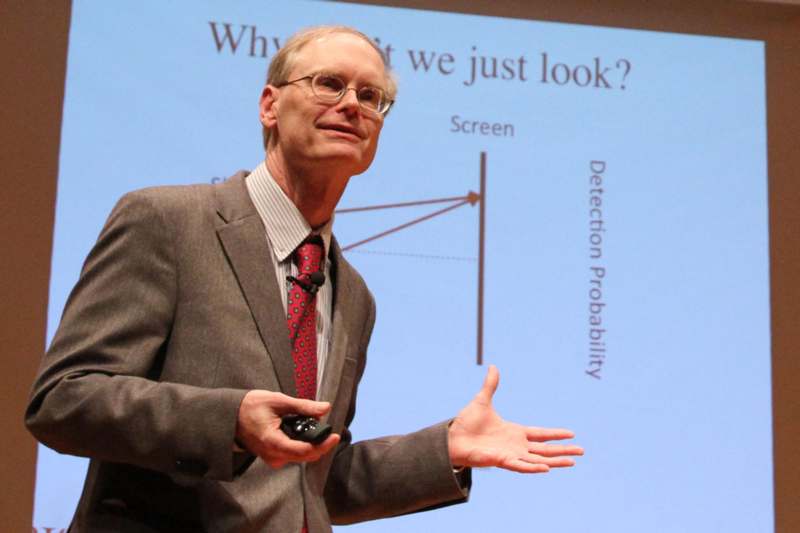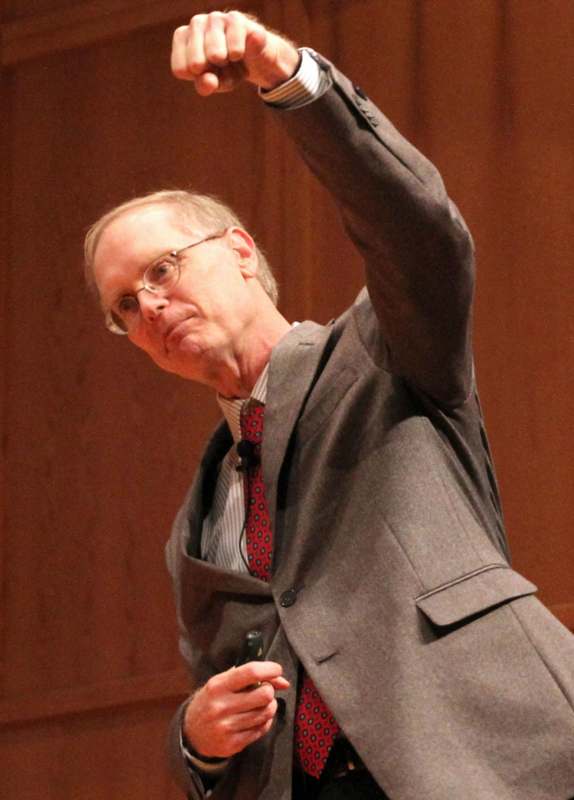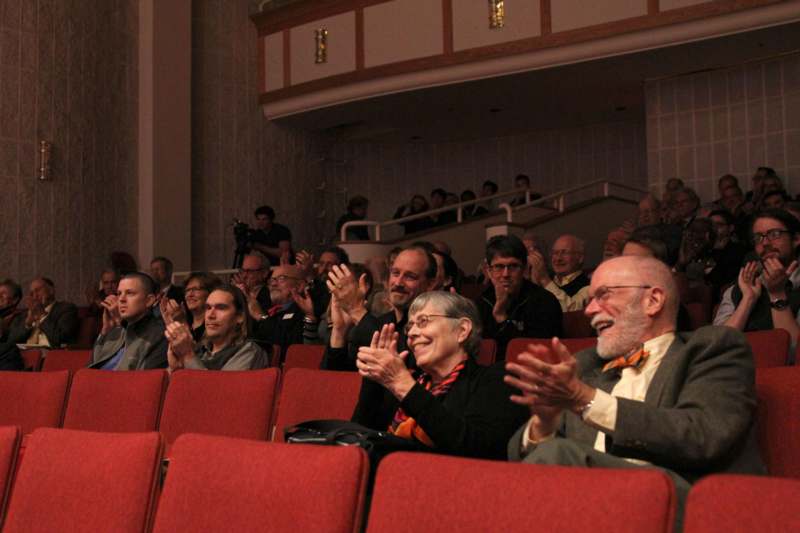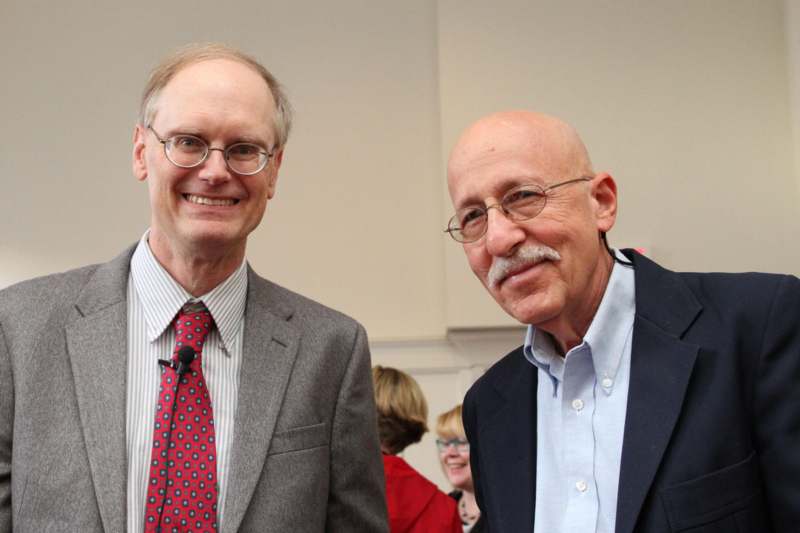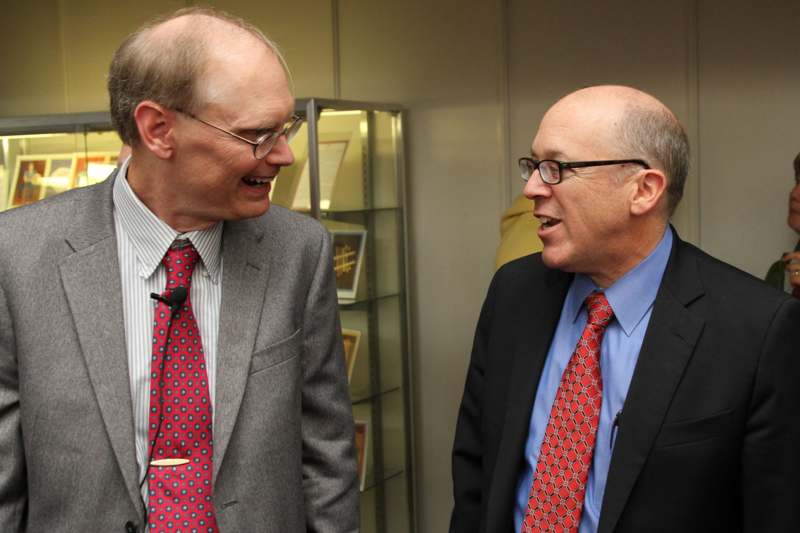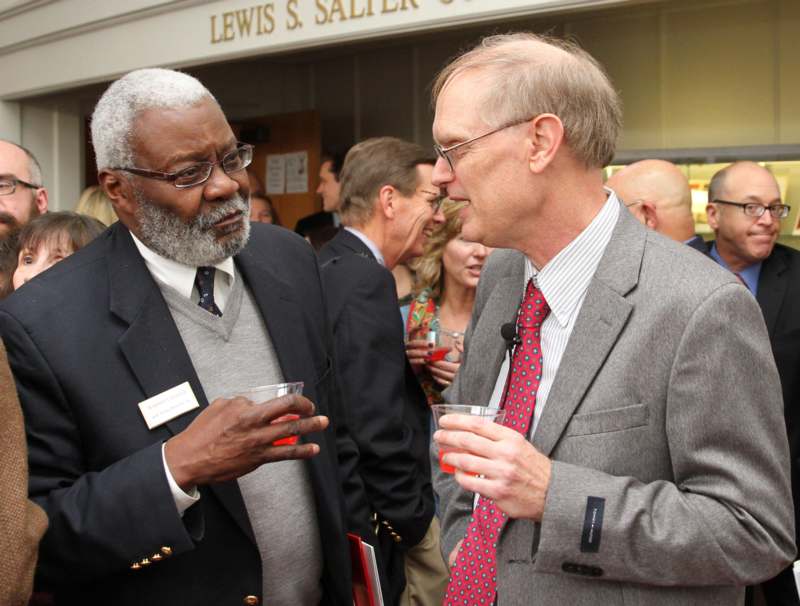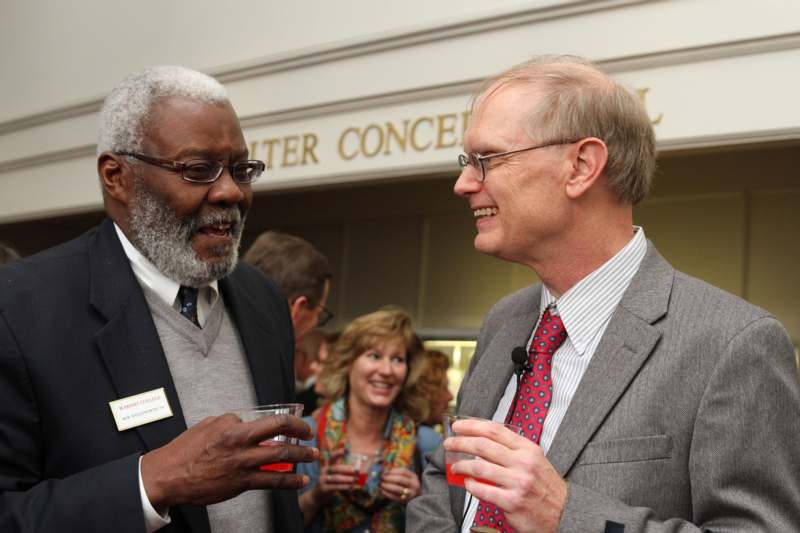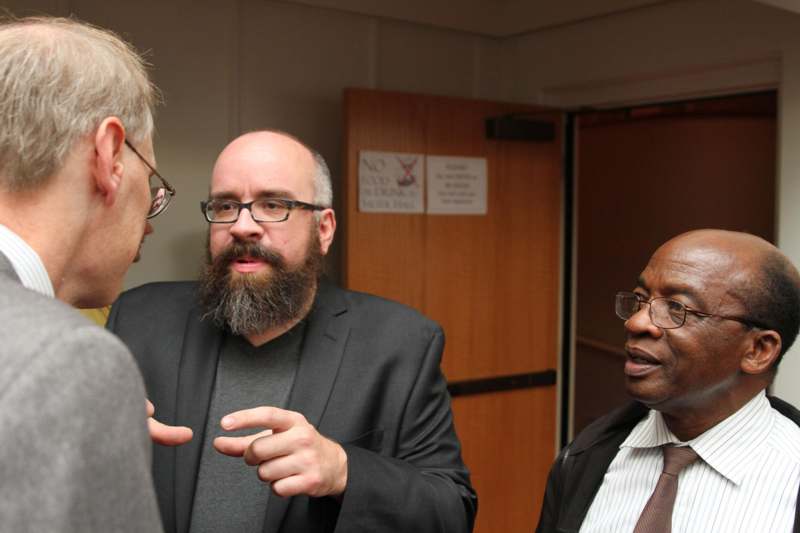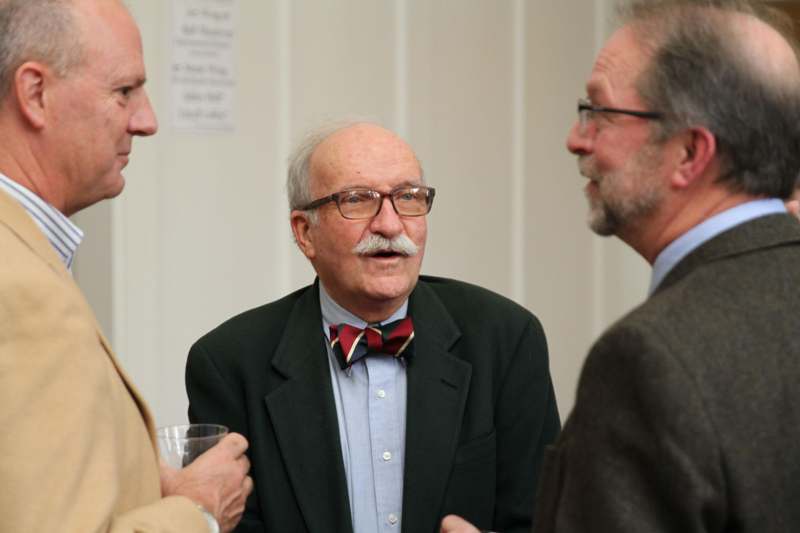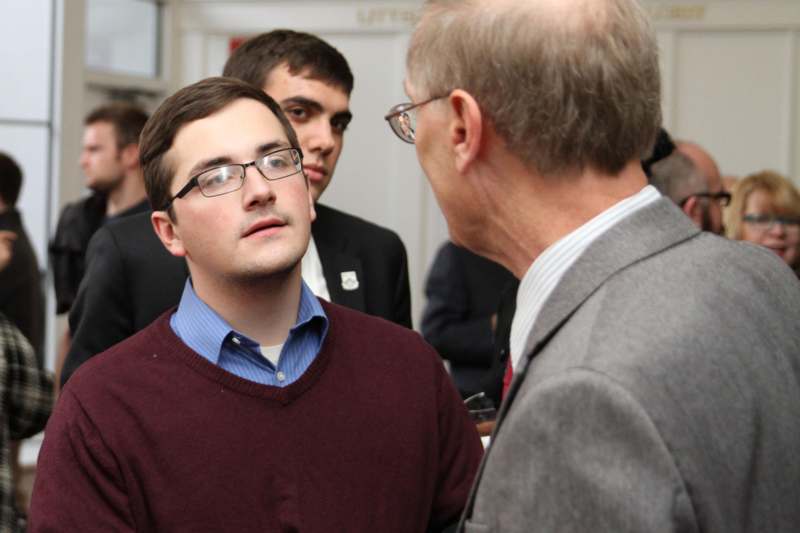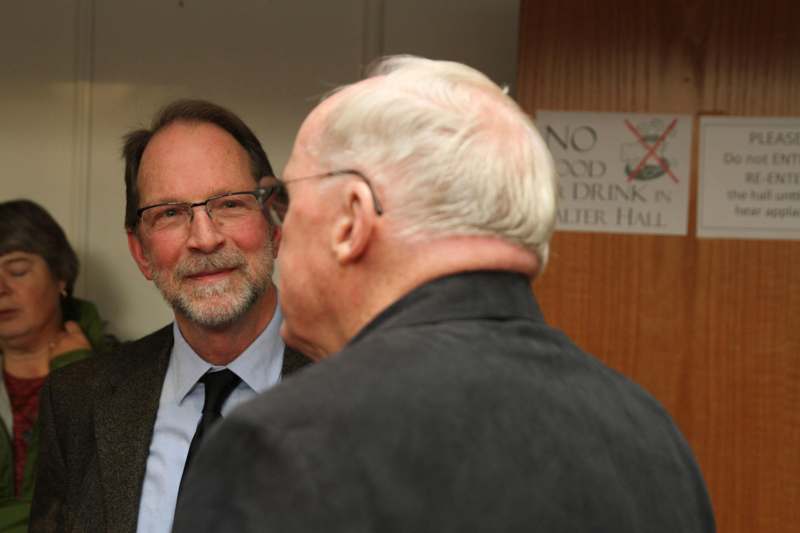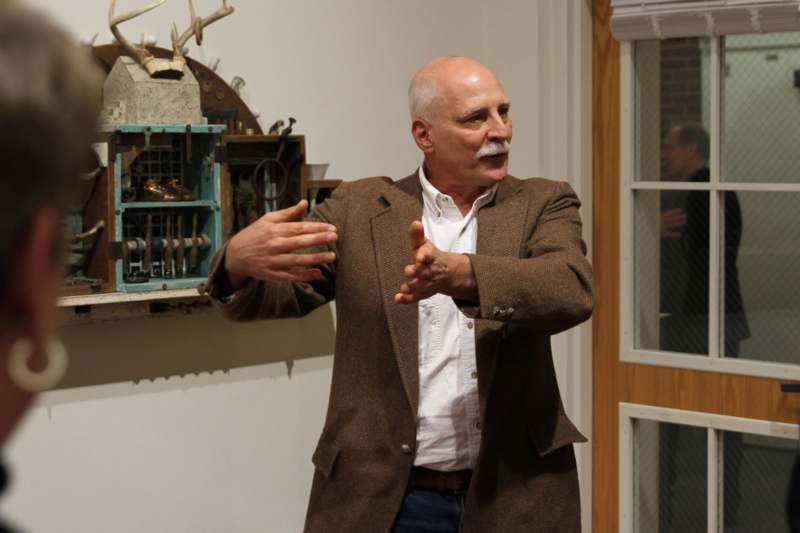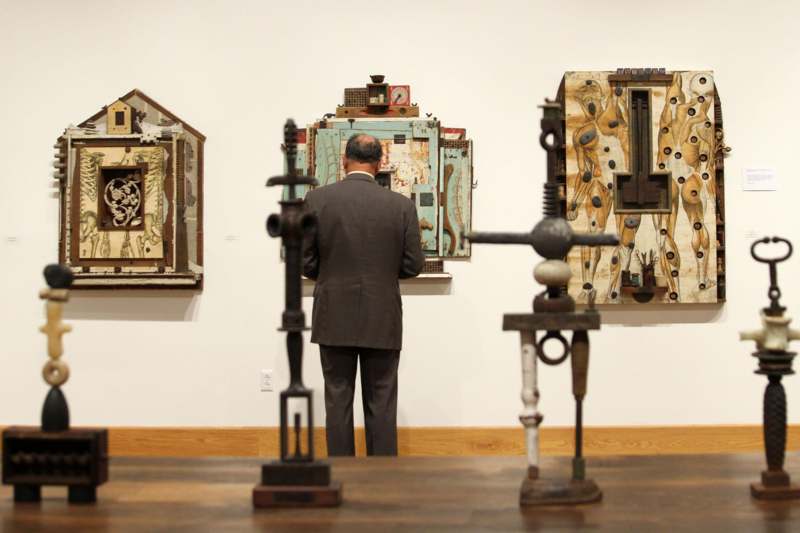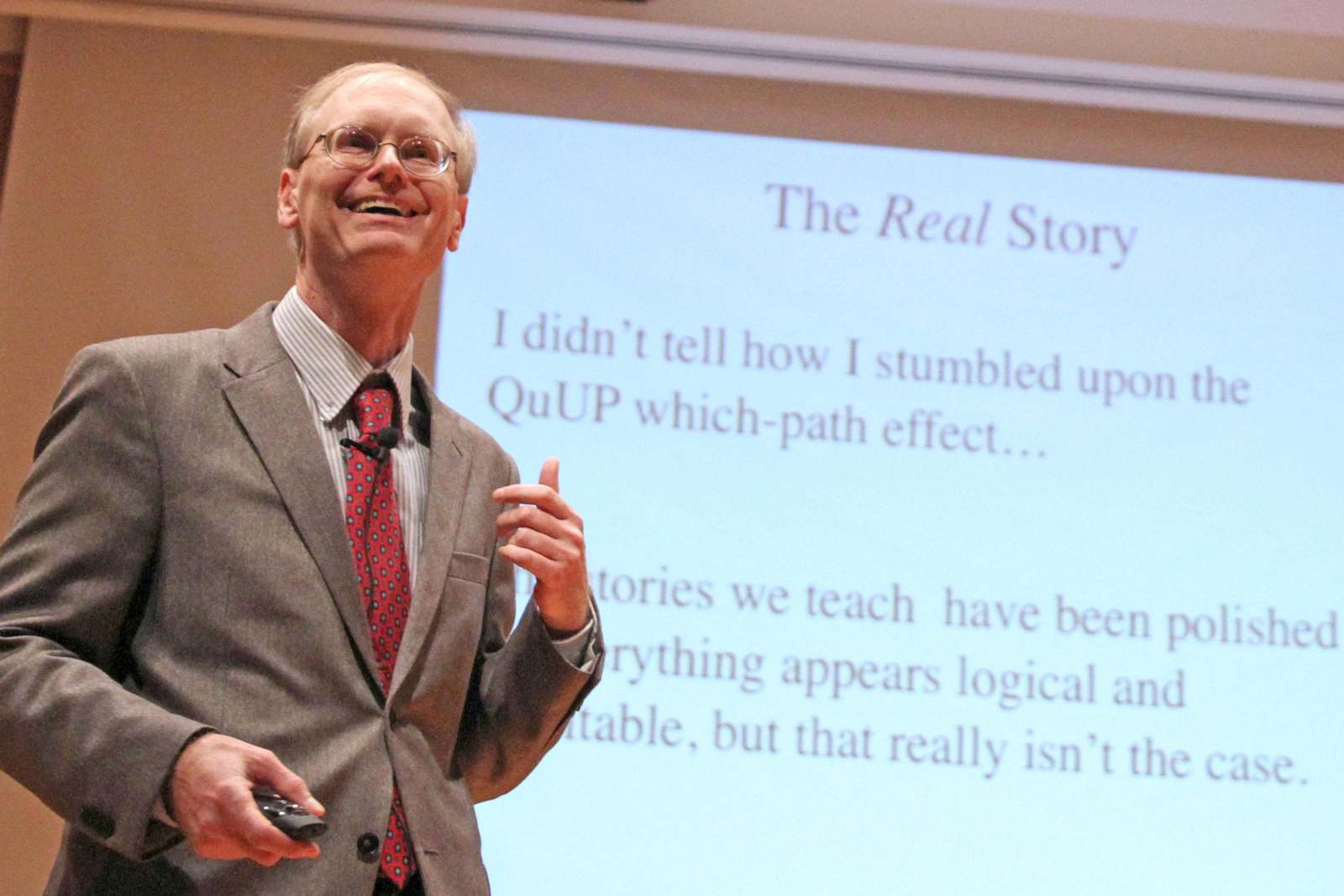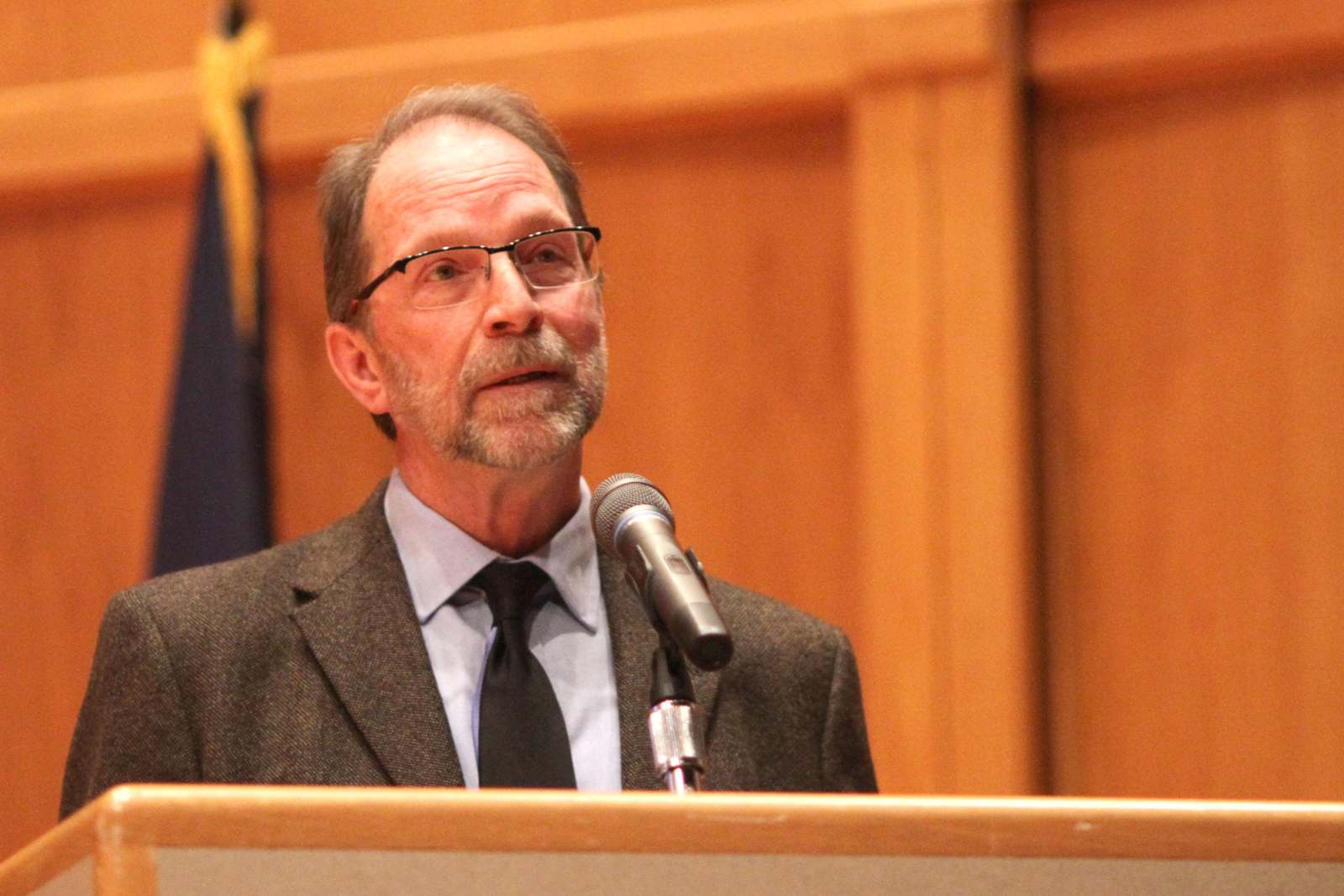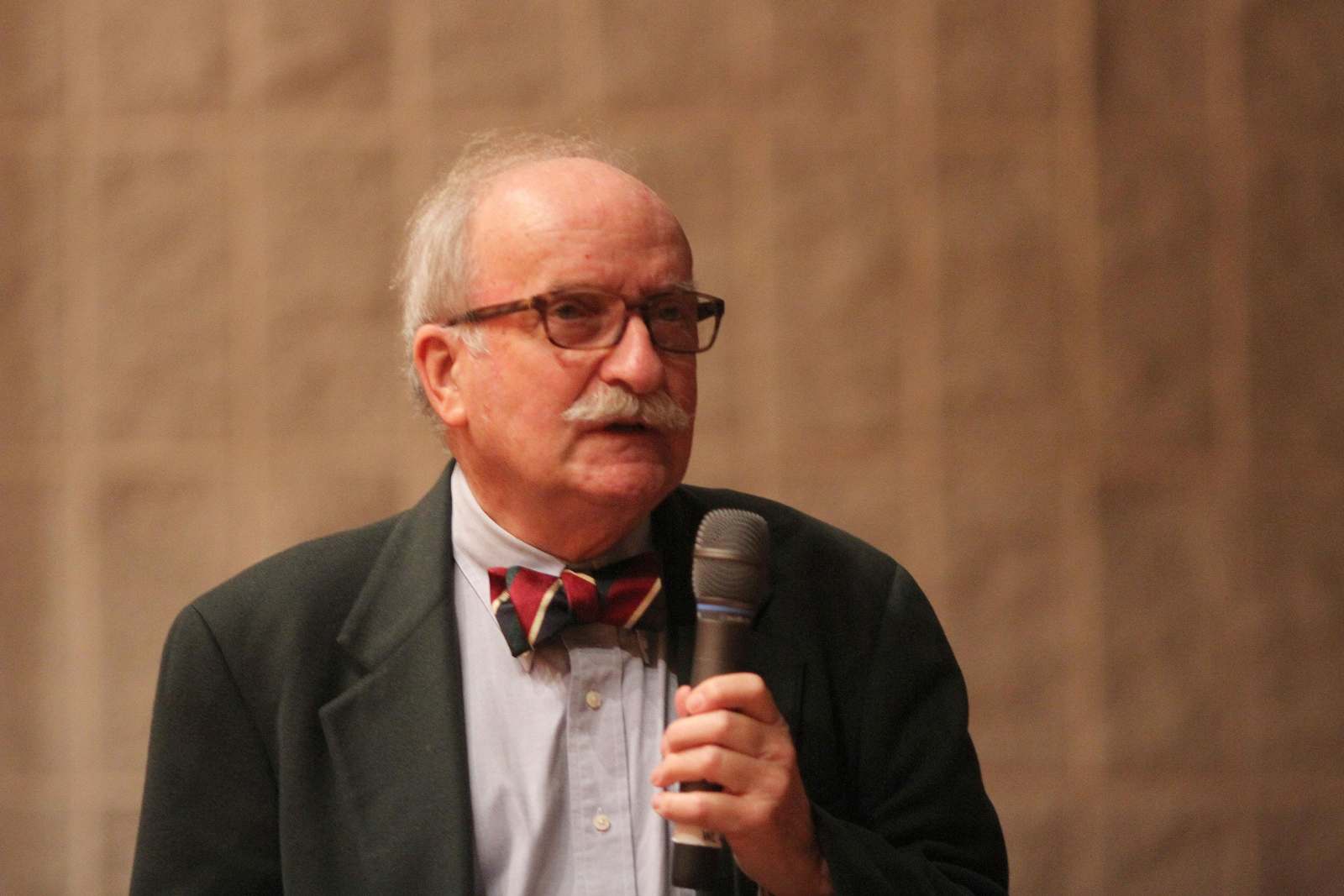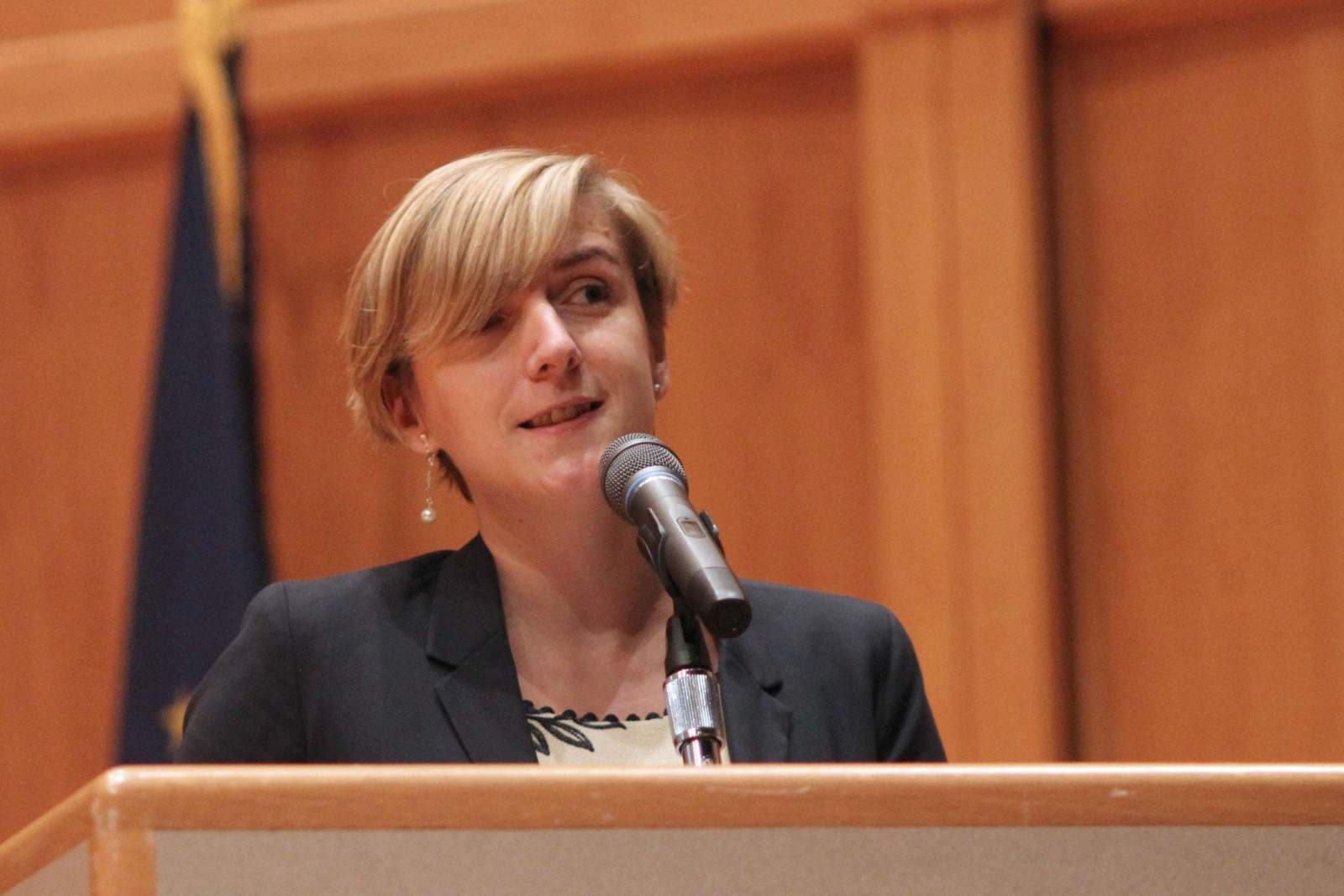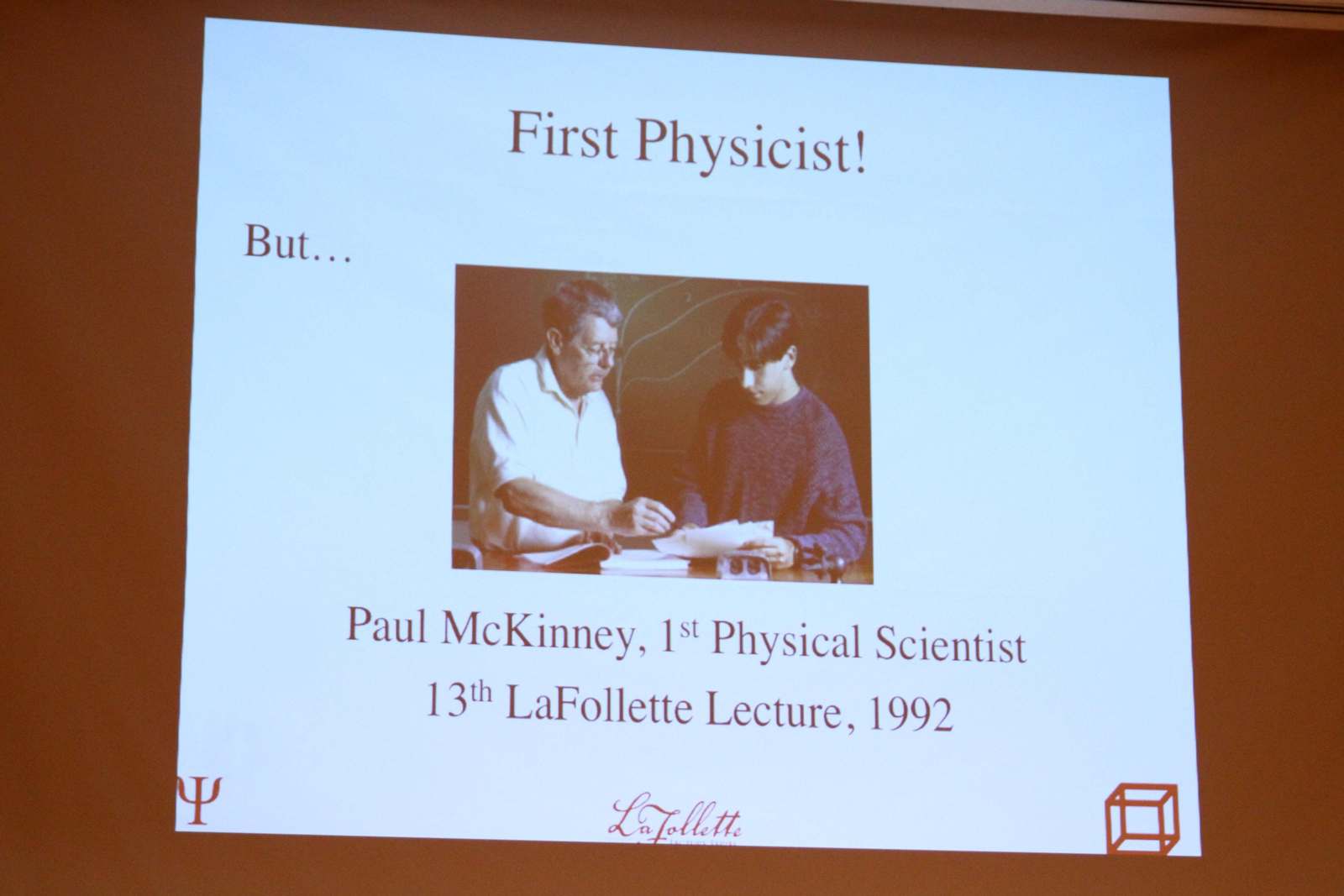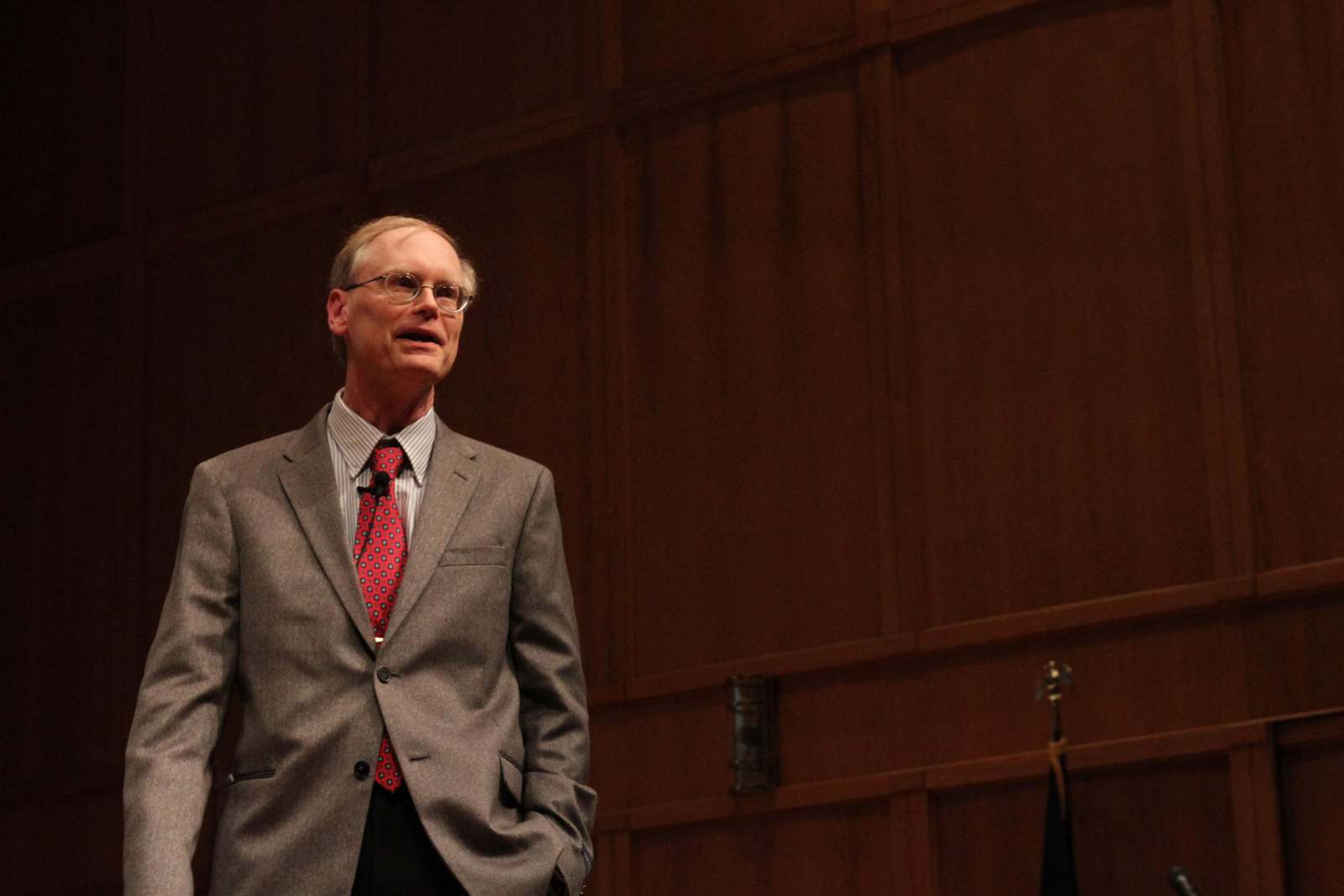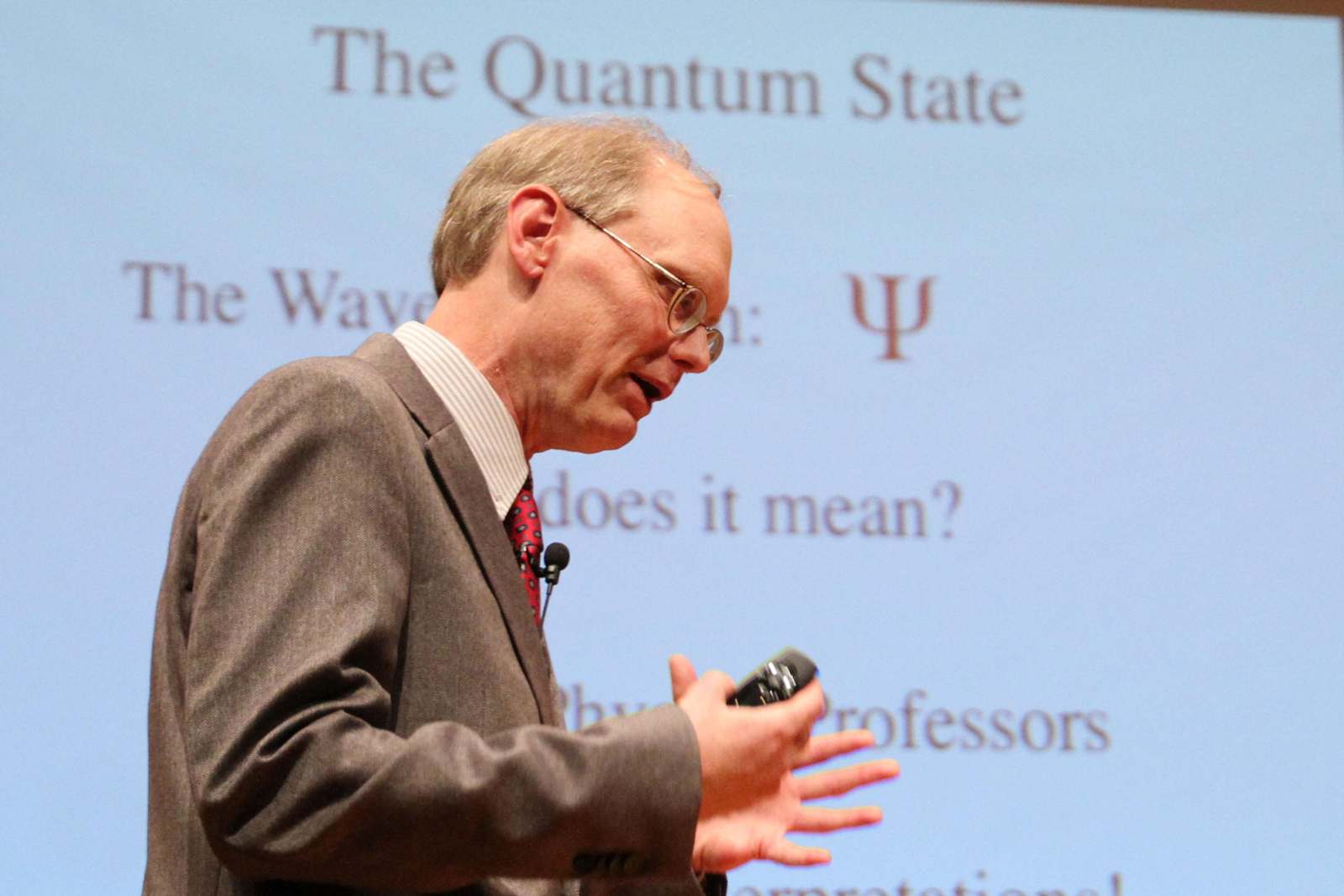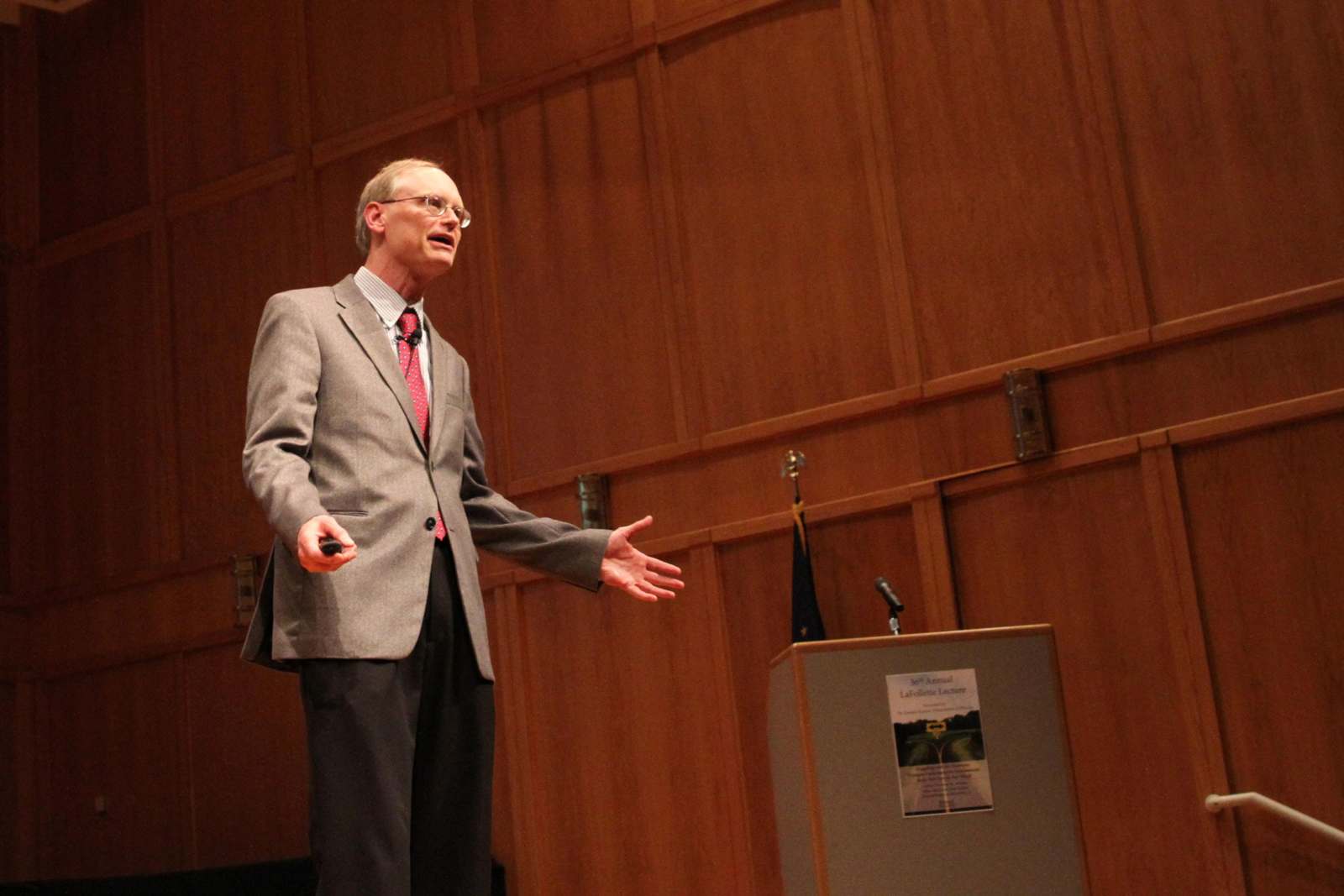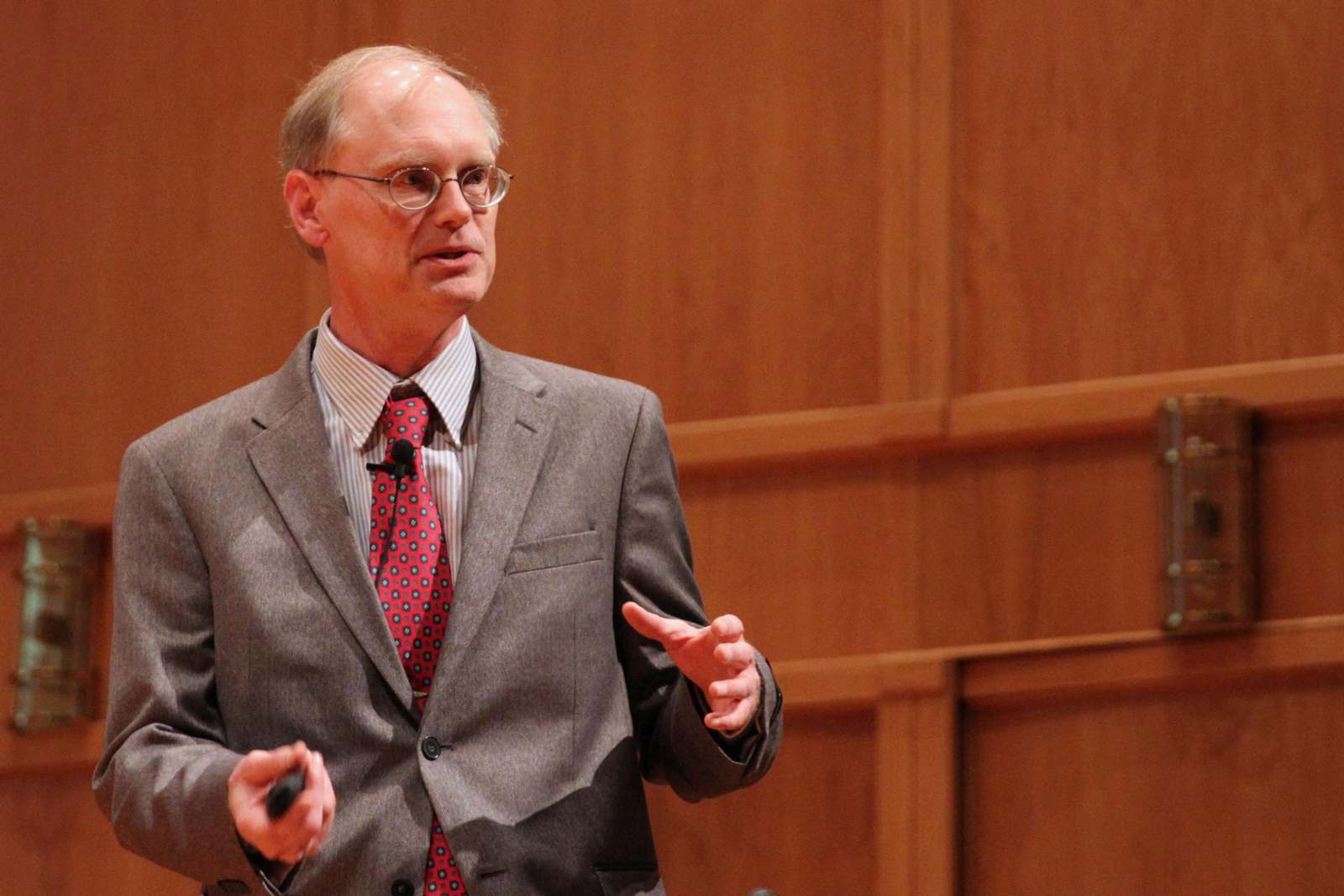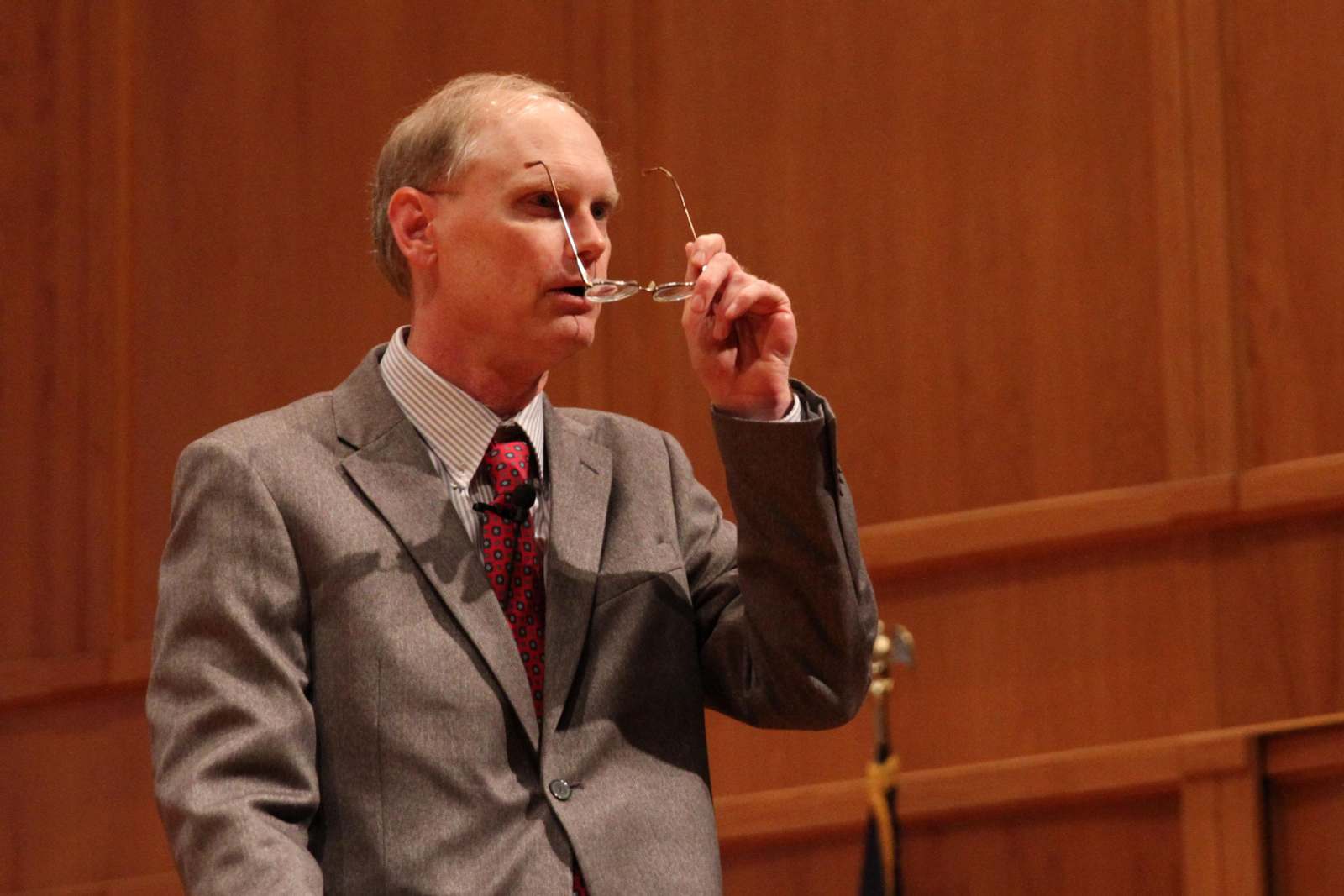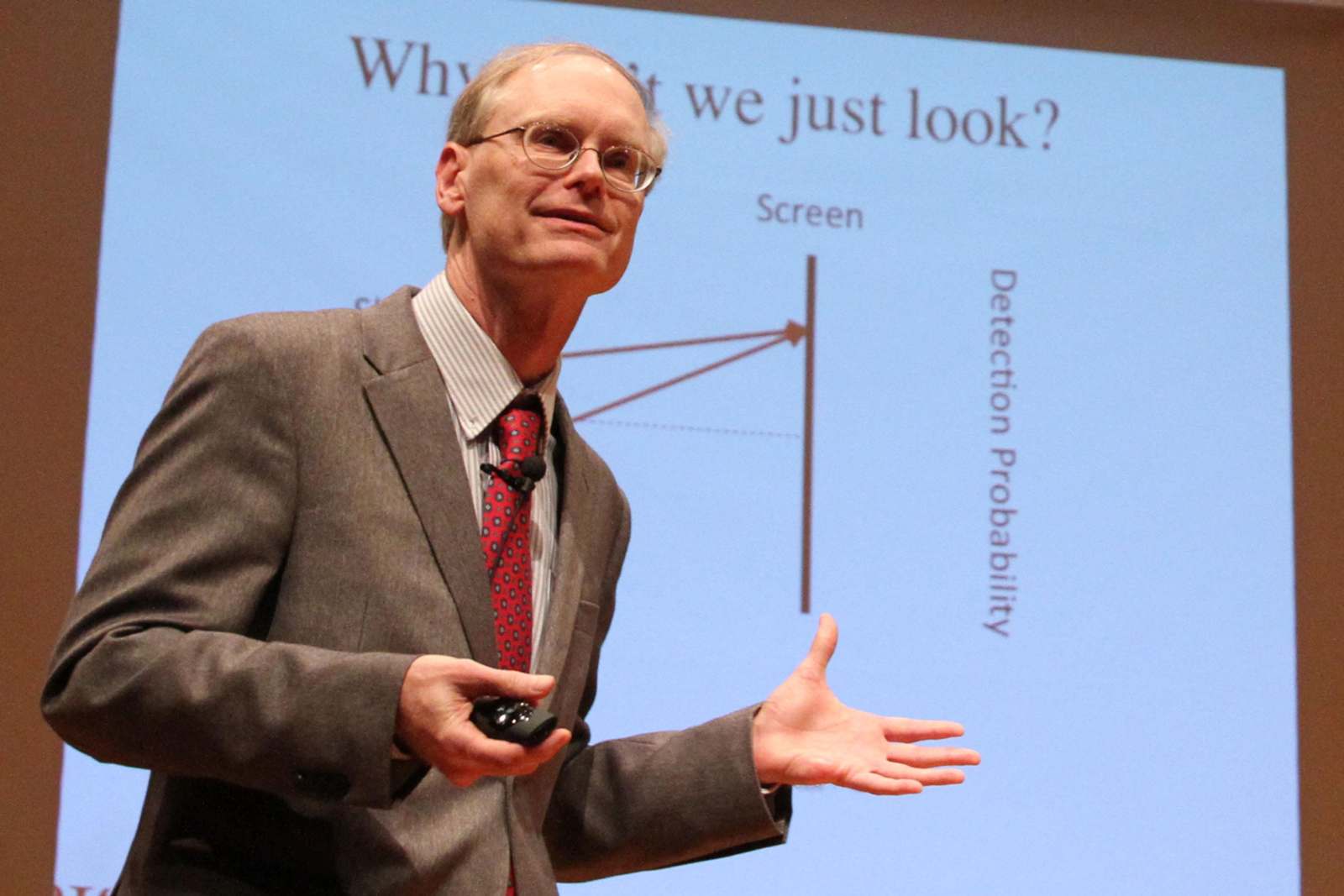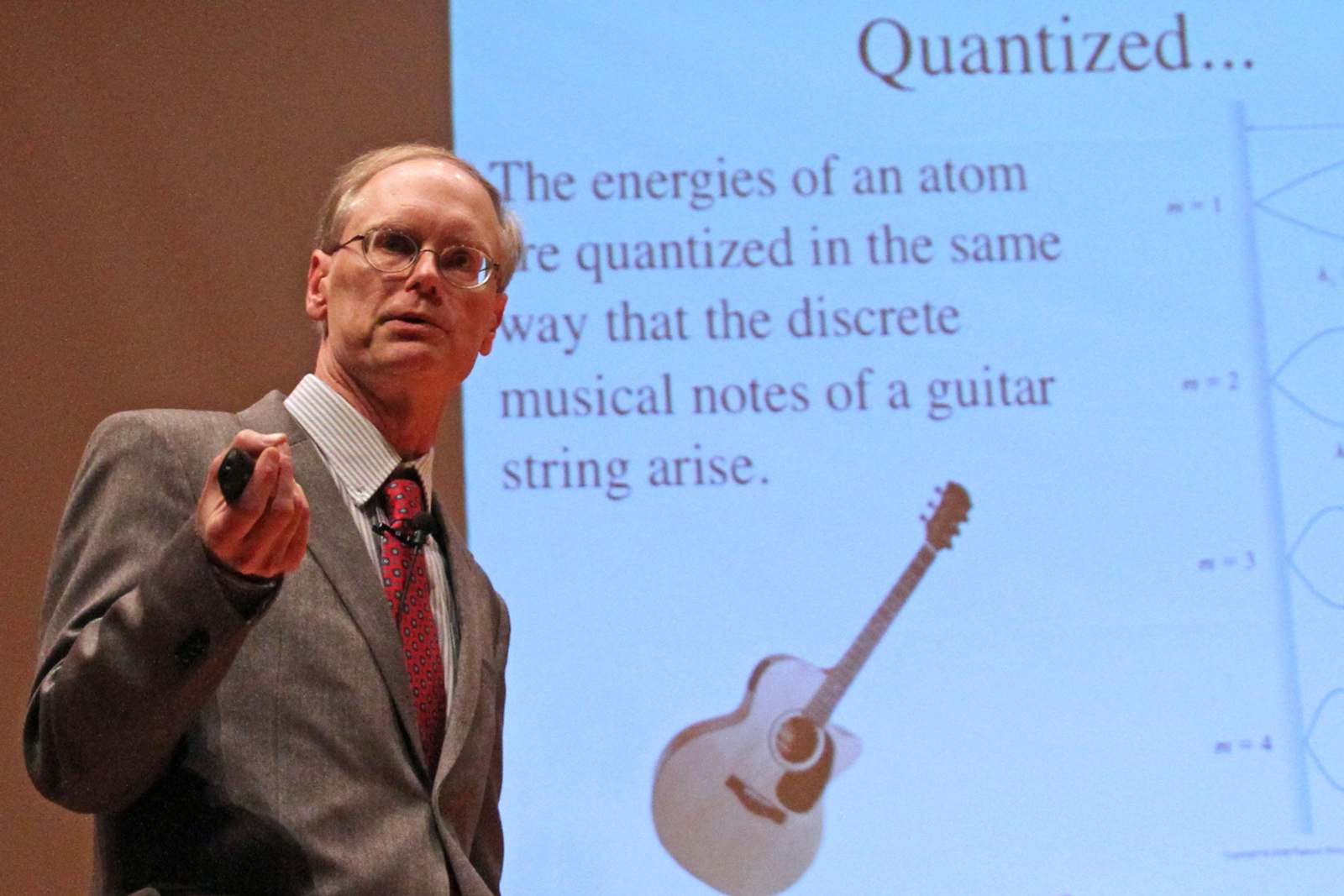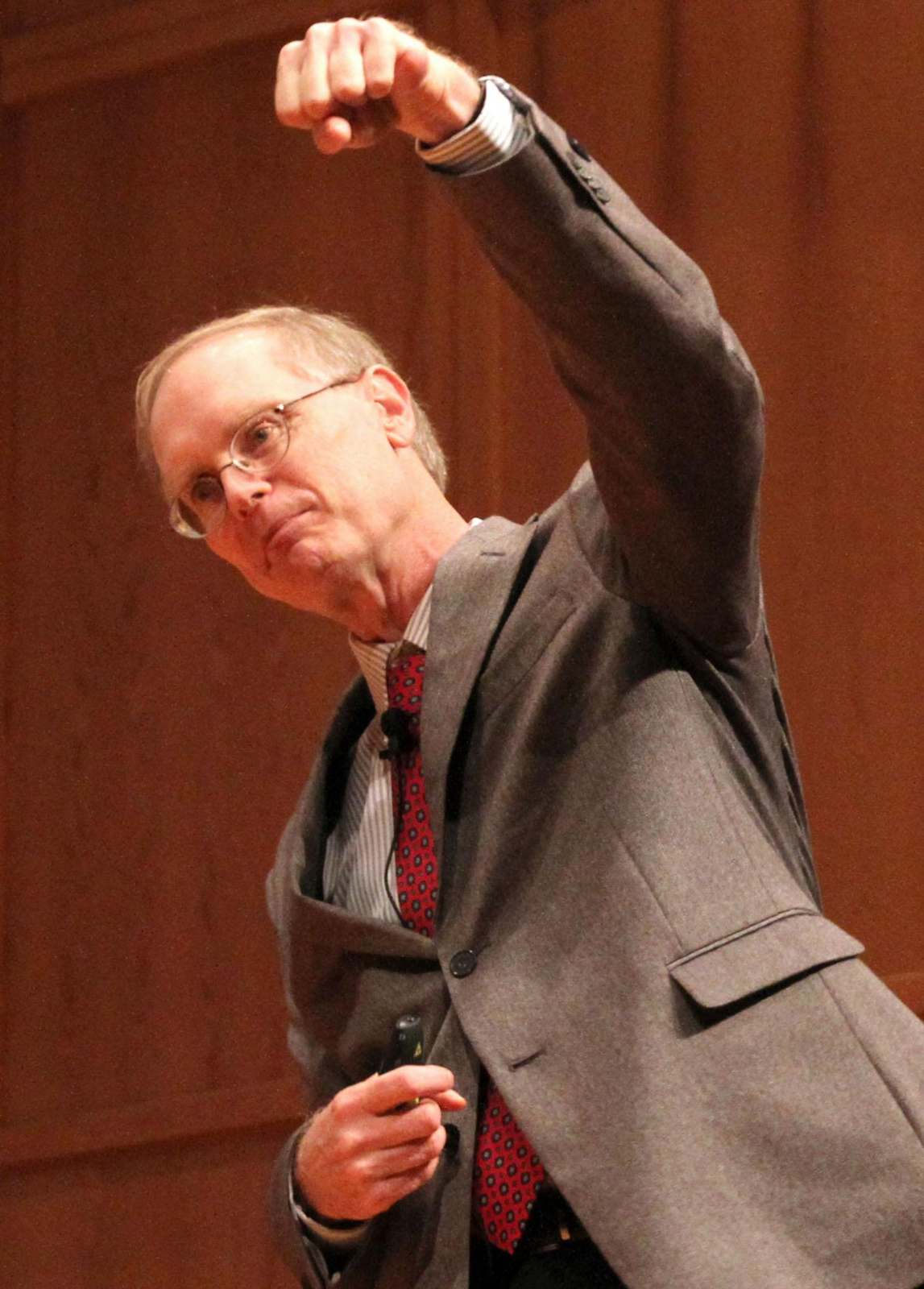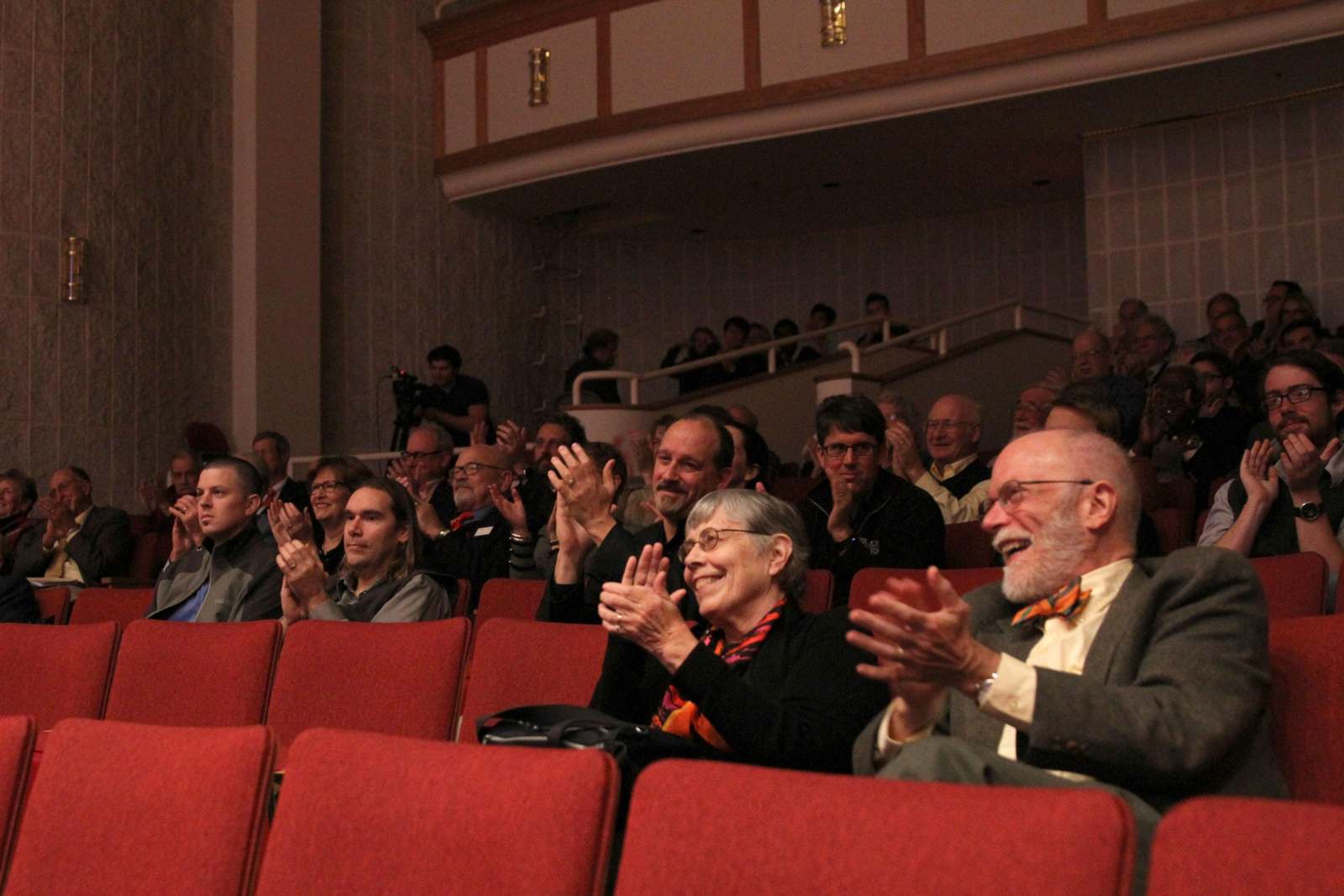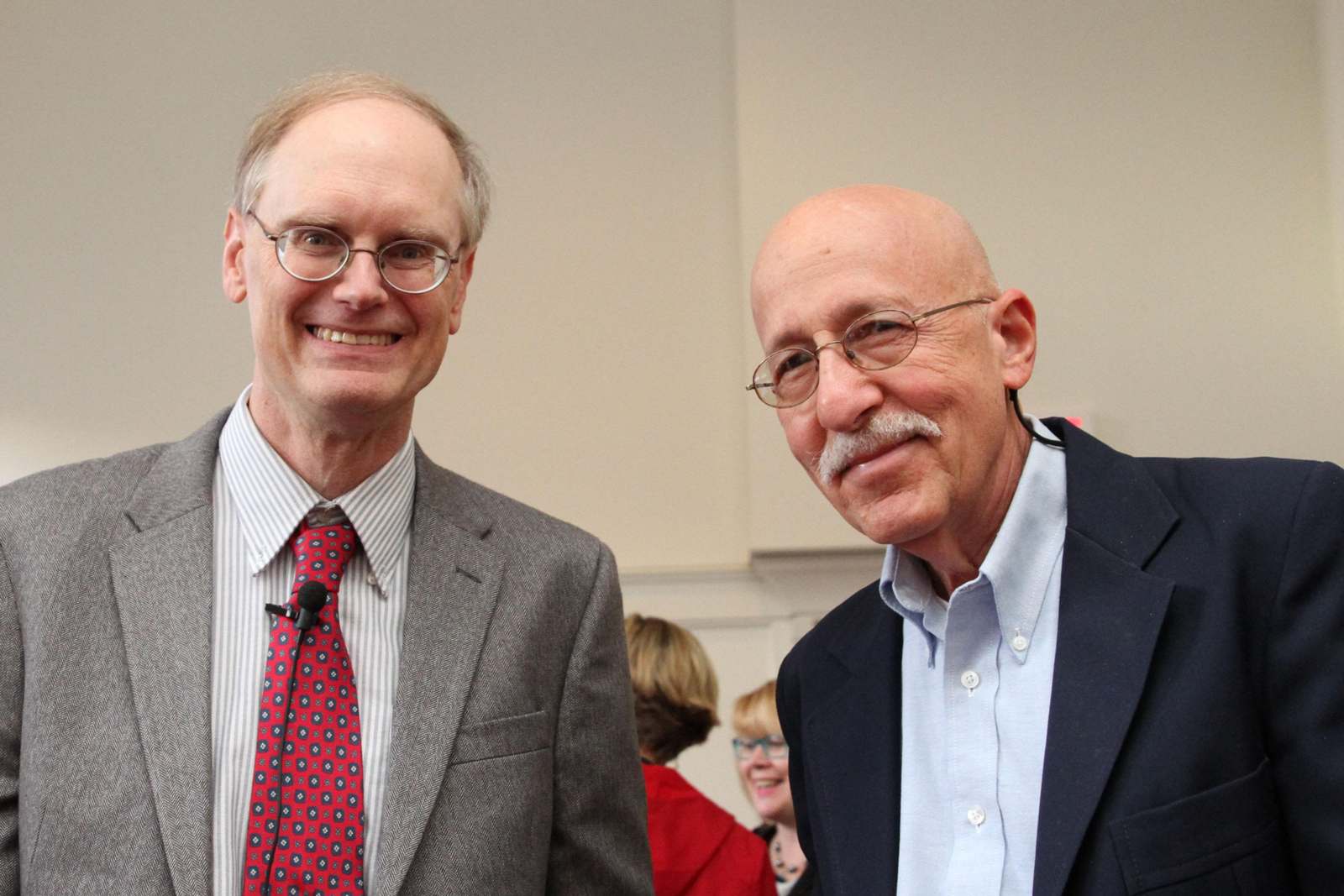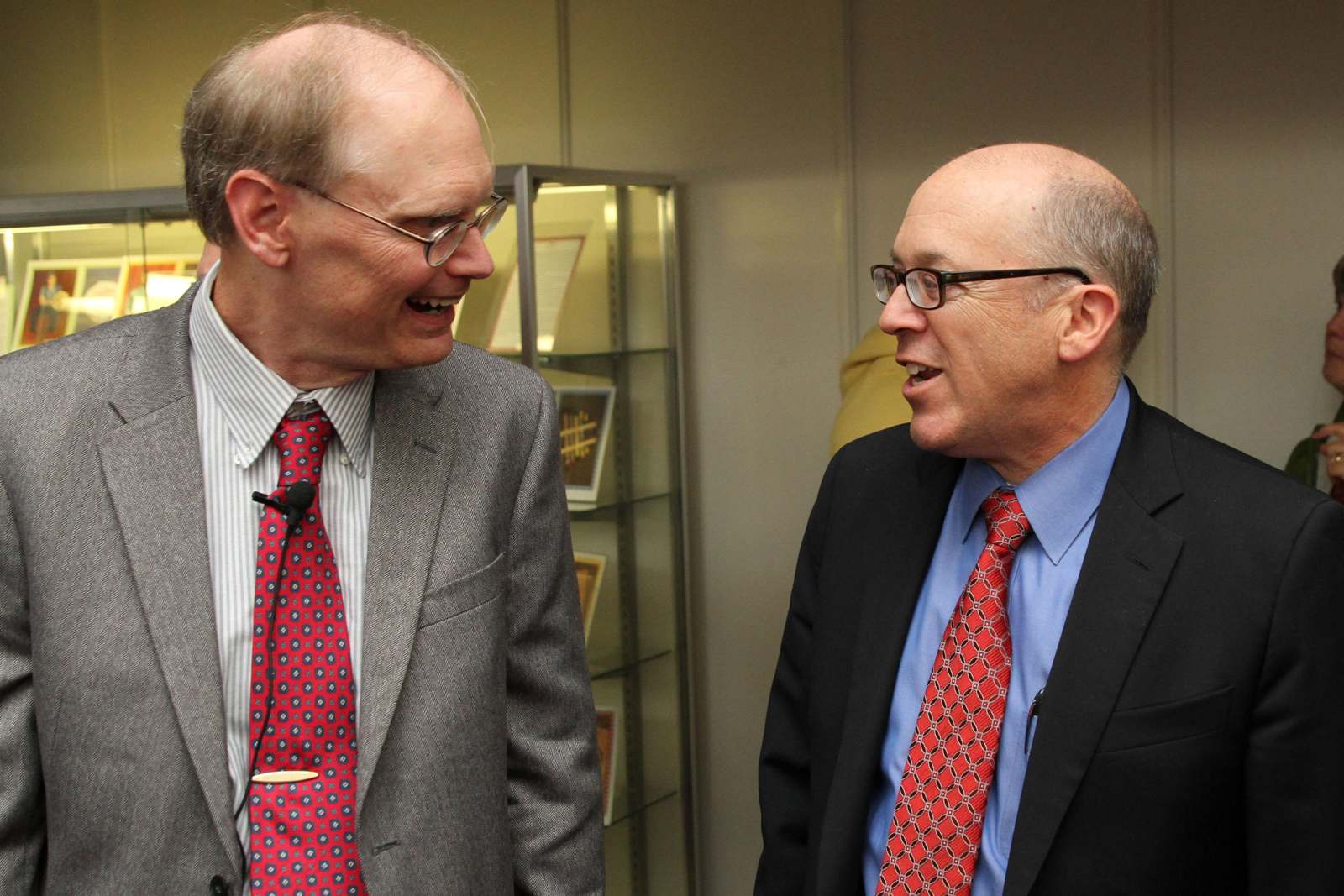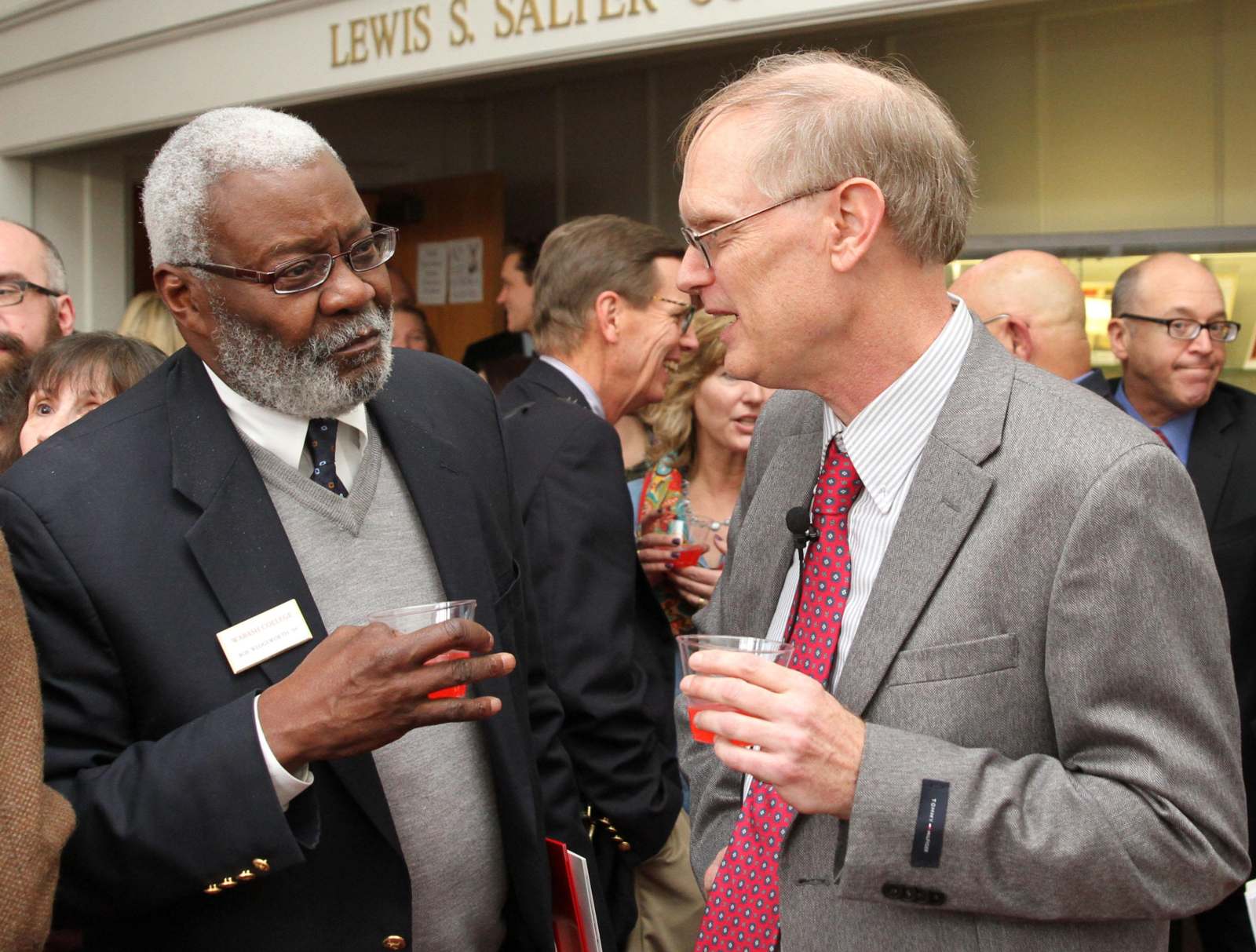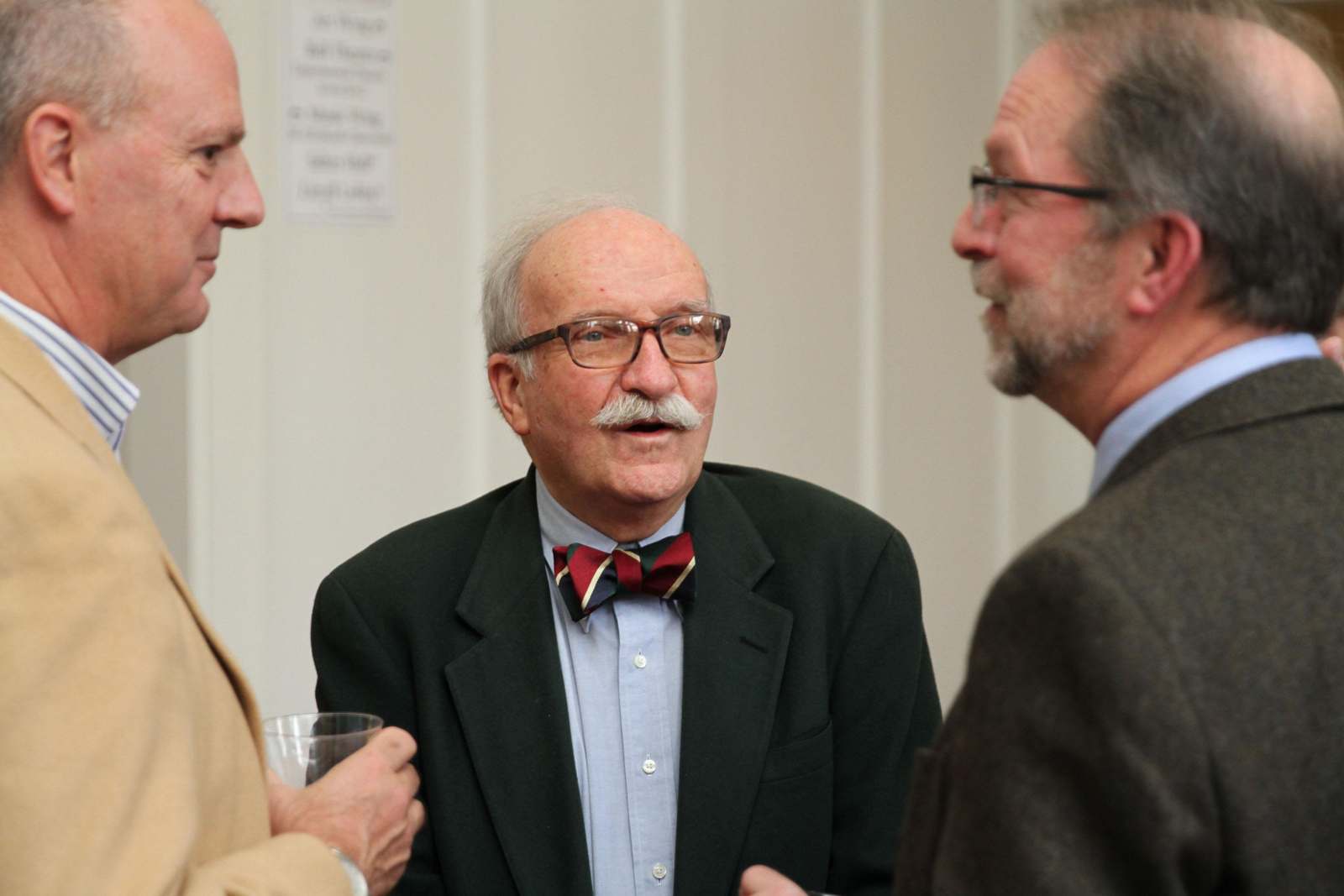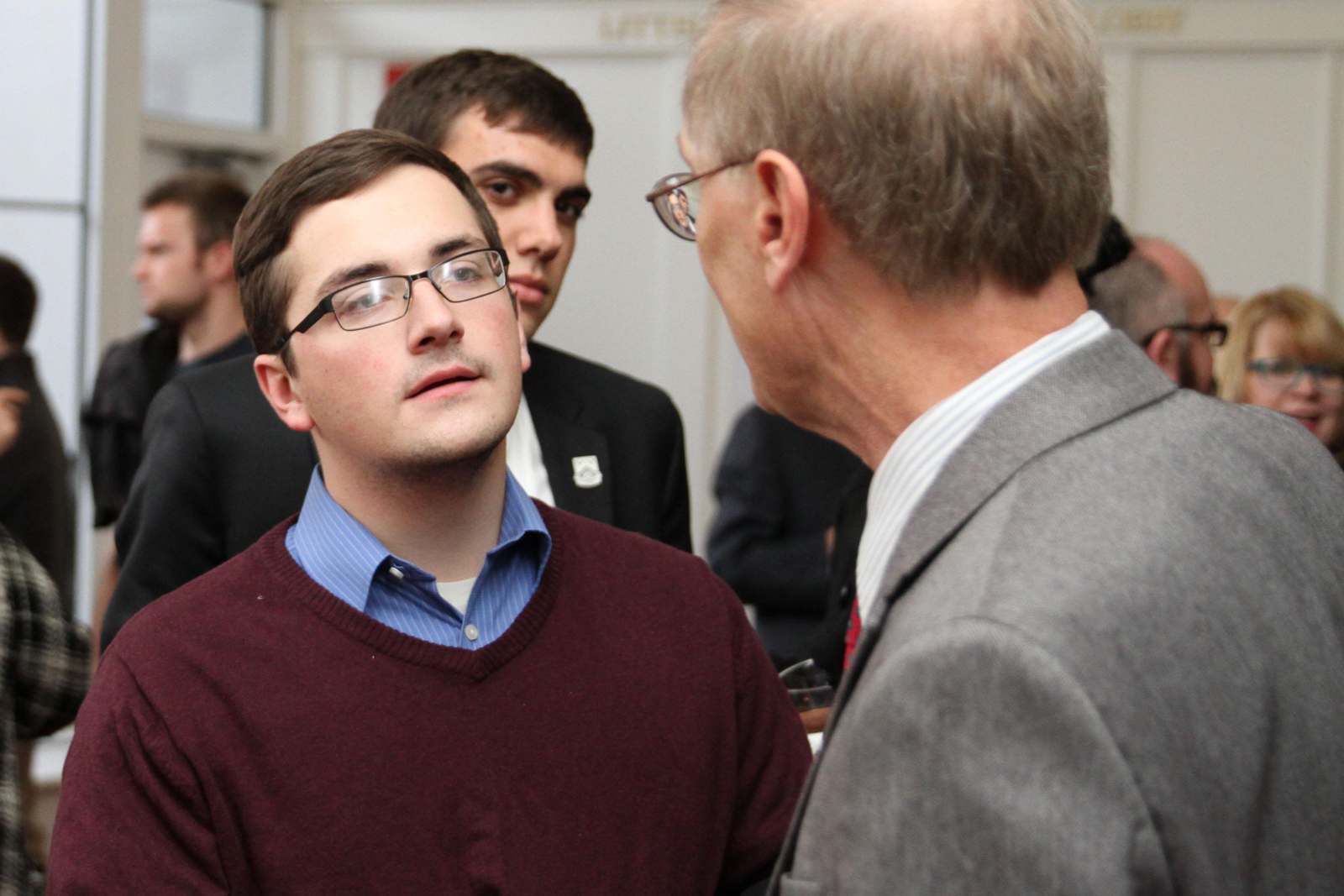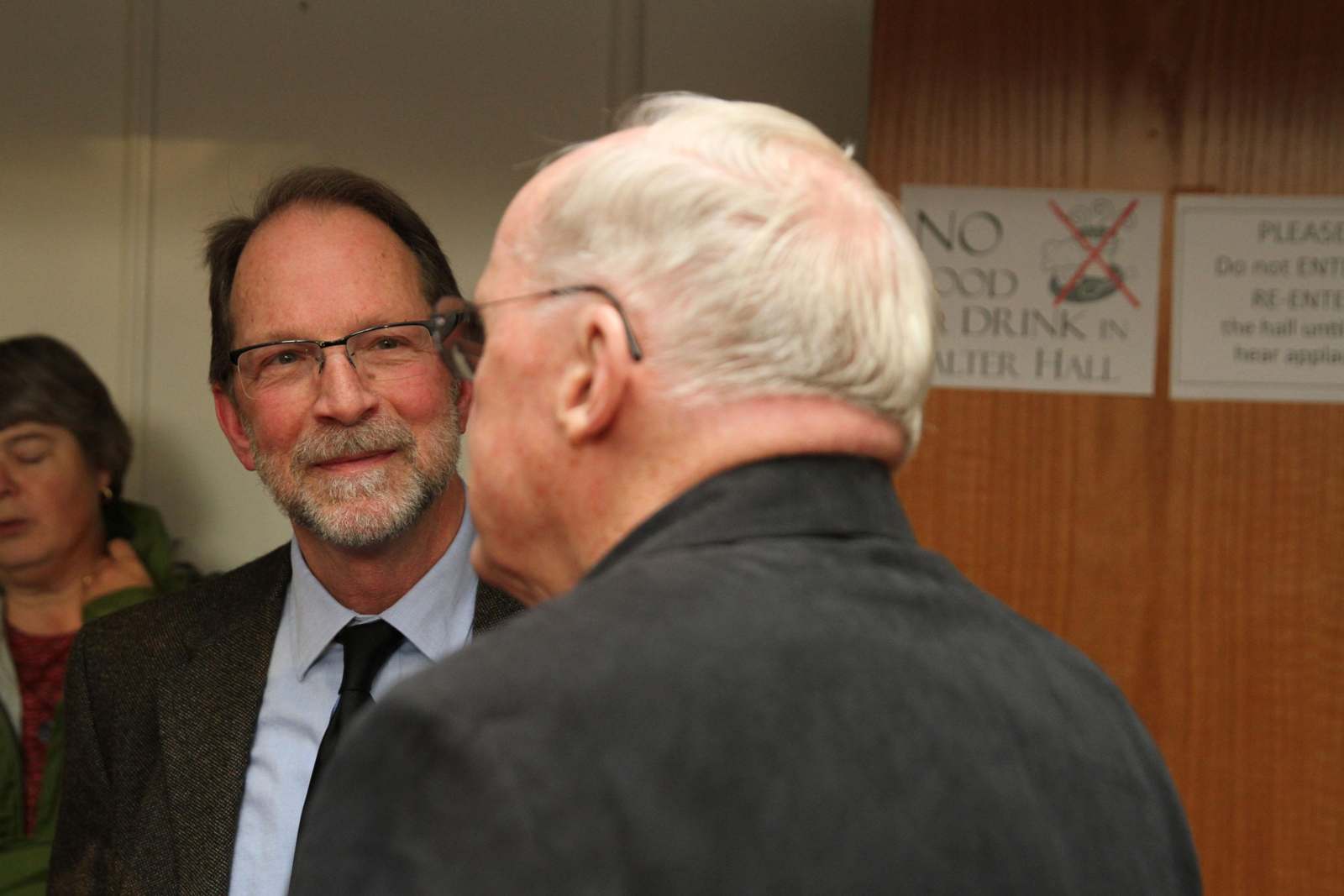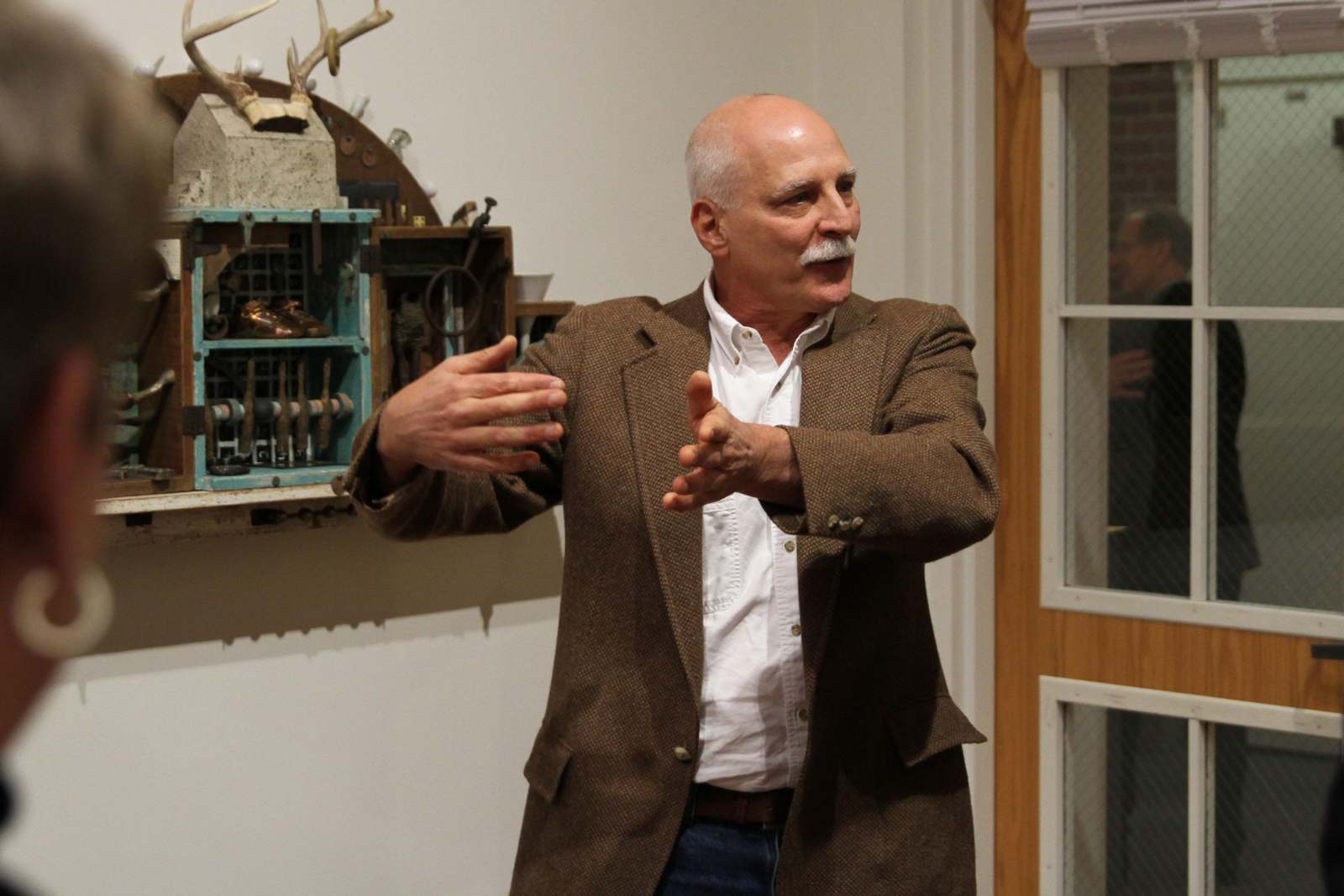2015 LaFollette Lecture: Professor Dennis Krause
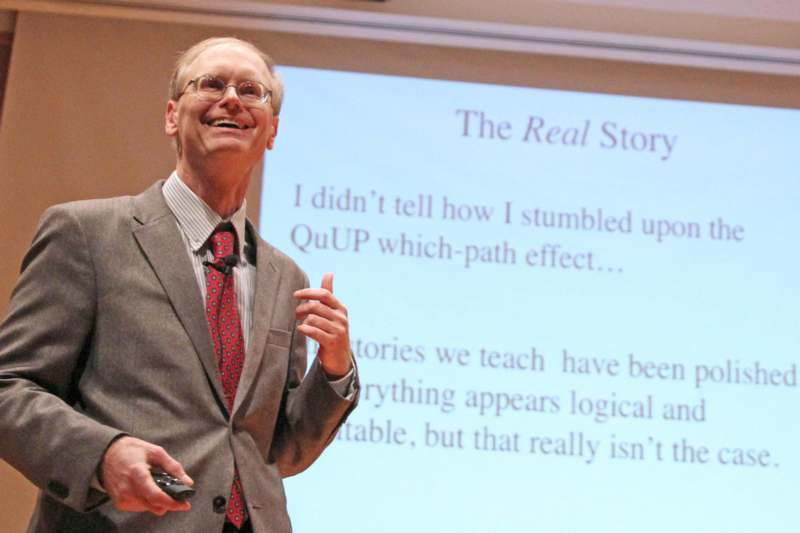
During a passionate, personal, and inspiring 36th Charles D. LaFollette Lecture in the Humanities, Professor of Physics Dennis Krause delivered the wonders of the “fantastic and wonderfully different” quantum world to the doorstep of his fellow professors in theology, philosophy, literature, art, classics, music, and theater.
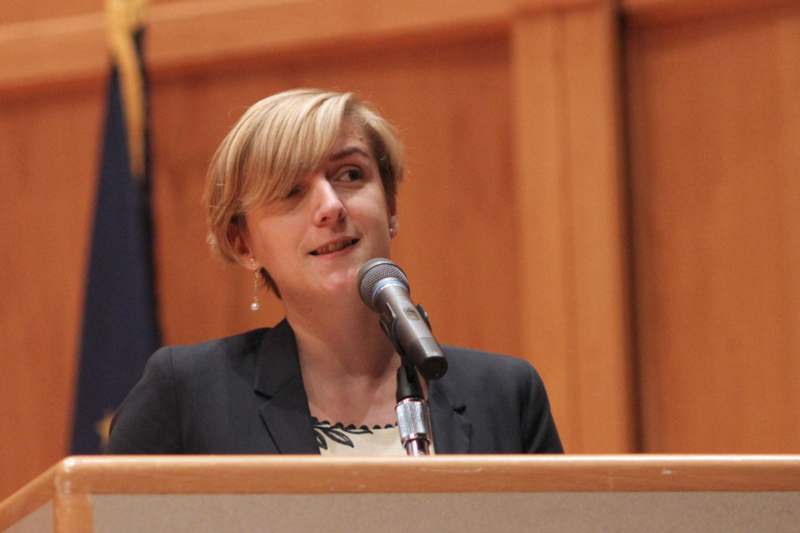
Last year's LaFollette Lecture and Associate Professor of English Agata Szczeszak-Brewer introduced Krause: 'Dennis embodies the liberal arts' mission to place science in the context of the humanities (and the other way around). His work in theoretical physics and his interest in the humanities are seamless, productive, and fascinating.'
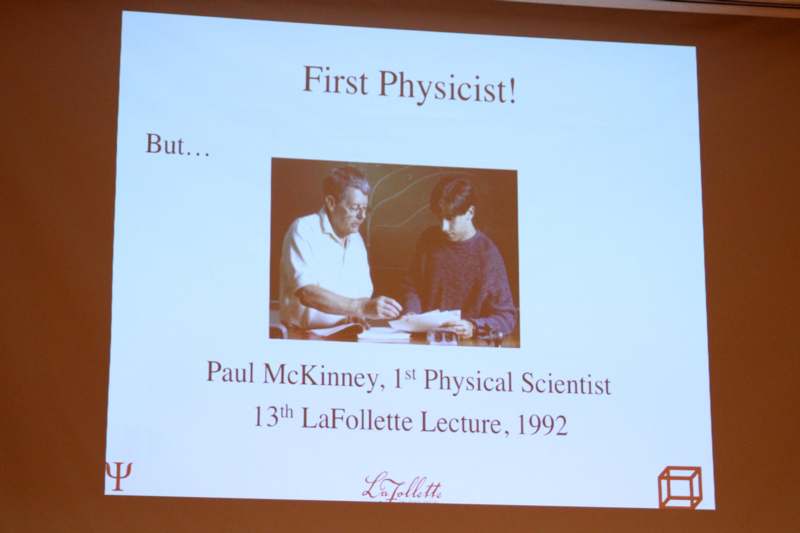
'While I’m honored to be first physicist to give the LaFollette Lecture, I actually believe I’m the second physical scientist to speak, following Paul McKinney who gave the thirteenth LaFollette Lecture in 1992,' Krause said. 'It shouldn’t be surprising to note that I’ll be speaking on some of the same things he discussed over 20 years ago since the problems of the quantum remain as fascinating now as then.'
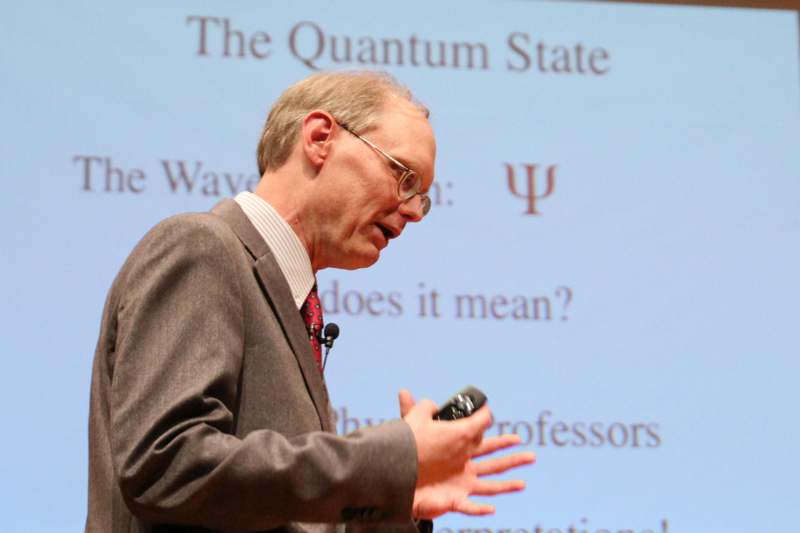
Pacing the Salter Hall stage with an excitement sparked when he was a Minnesota farm boy reading Isaac Asimov’s description of neutrinos, Krause said, '“It doesn’t matter how beautiful and elegant the equations may be, if they fail to describe the world, they must be discarded. In physics, theories must work.”
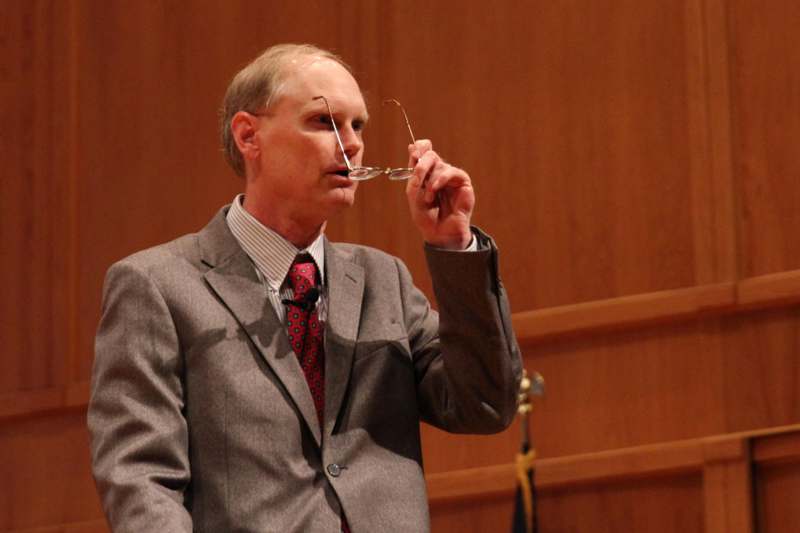
This is how science is really done. After the fact, when we have figured everything out, we polish the story so everything appears logical and almost inevitable, but that isn’t really the case. This is why it is so important to support student research and creative work so students can actually see how the things we teach were discovered or created. They can then realize that they, too, can do this.


